Leilani Residents Express Concern Over Lasting Health Impacts
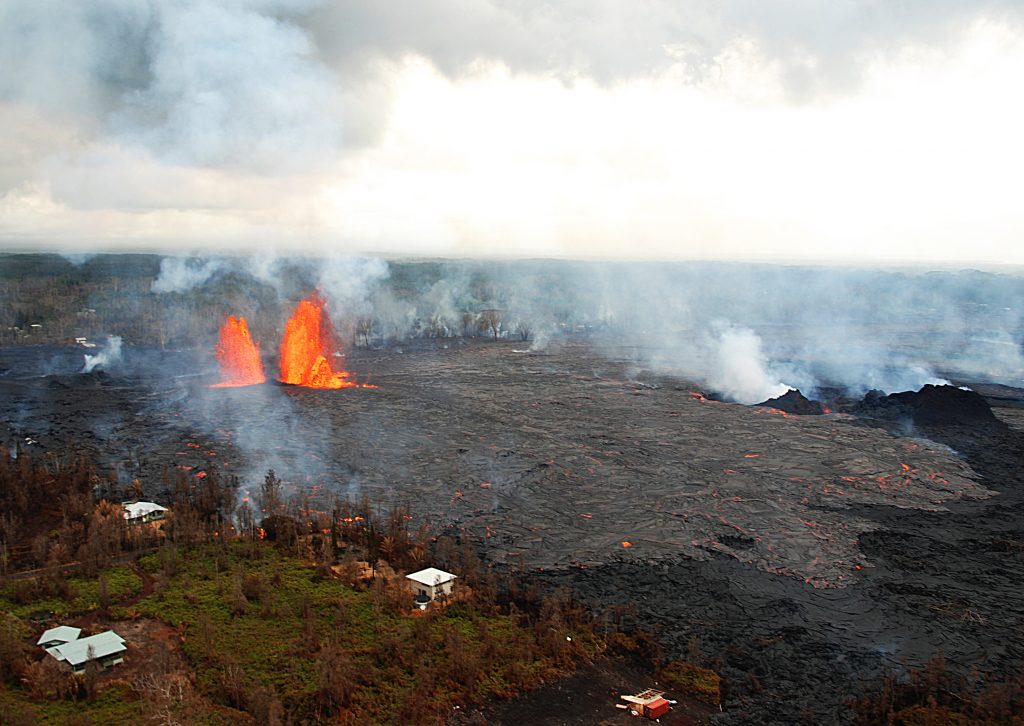
Fissure 8 reactivated in late May and becomes the dominant vent in the Lower East Rift Zone eruption in Leilani Estates. Click to enlarge. PC: USGS
Pele took a total of 716 homes in the Big Island’s Lower East Rift Zone last year. Those whose homes still remain were allowed to return six months ago on Sept. 8, 2018. Some returning residents are being affected by air pollutants.
Driving from Kalapana to Pāhoa, travelers will pass through the orange cones and clouds of fumes continuing to emanate from Fissure 8.
Hawai‘i County Civil Defense Administrator Talmadge Magno said it had been determined that it is safe for Leilani residents to return, “based on what Hawaiian Volcano Observatory determined was the conclusion of the eruption and the gas levels being low or nonexistent and the nonexistence of lava on the surface.”

Fissure 8 in full force on July 27, 2018. Click to enlarge. Courtesy photo.
Nancy Robbins, a resident a mile downwind from Fissure 8, said, “I’m really sensitive to the sulfur dioxide. I feel like there’s a vice around my head and I just can’t breathe… They can say the SO2 is negligible, but if you’re sensitive to it, it’s not really negligible.”
“I just got my inhaler renewed and they told me to be careful and try not to go outside when the air is bad,” Robbins said. “When it is bad here, I go into Pāhoa, Kea‘au or Hilo, and within an hour, my lungs are cleared up… but then I have to come back home.”
“My doctor assumes that the reason I got pleurisy was due to the emissions in the air and possibly by Pele’s Hair,” said a homeowner who wishes to remain anonymous. “I now have to keep an inhaler with me; it helps with the chronic cough I have had ever since moving back home.”
According to U.S. Geological Survey, in addition to SO2, eruptions release hydrogen sulfide, which is very toxic at high concentrations.
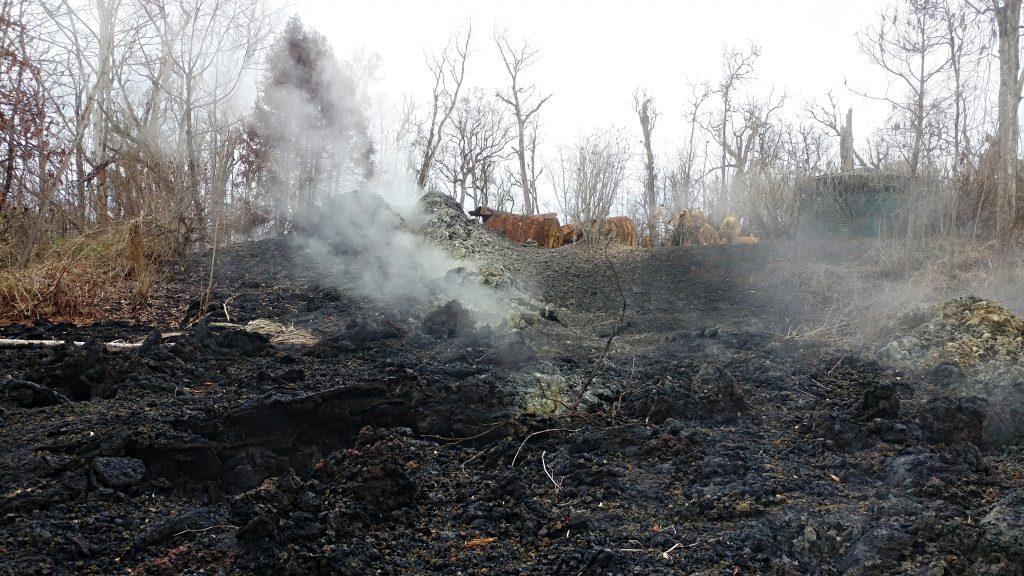
Steam shrouds Fissure 8, which was caused by heavy rain from Hurricane Lane in Leilani Estates Subdivision on Aug. 27, 2018. Click to enlarge. PC: Crystal Richard
Volcanic eruptions also release fluorine, chlorine and bromine, which are strong, toxic acids, and methane, which can interfere with oxygen levels.
The state Department of Health maintains permanent SO2 and PM2.5 (particulates) air monitoring stations around the Big Island.
“My AC filter in the car was black from months of that stuff that I breathed in daily,” said Leilani resident Dennis Kitsman. “Smelling it, feeling it and no escaping it. It won’t show up now, but someday I’m sure it will for all of us here in Puna,” he said about residents’ future health.
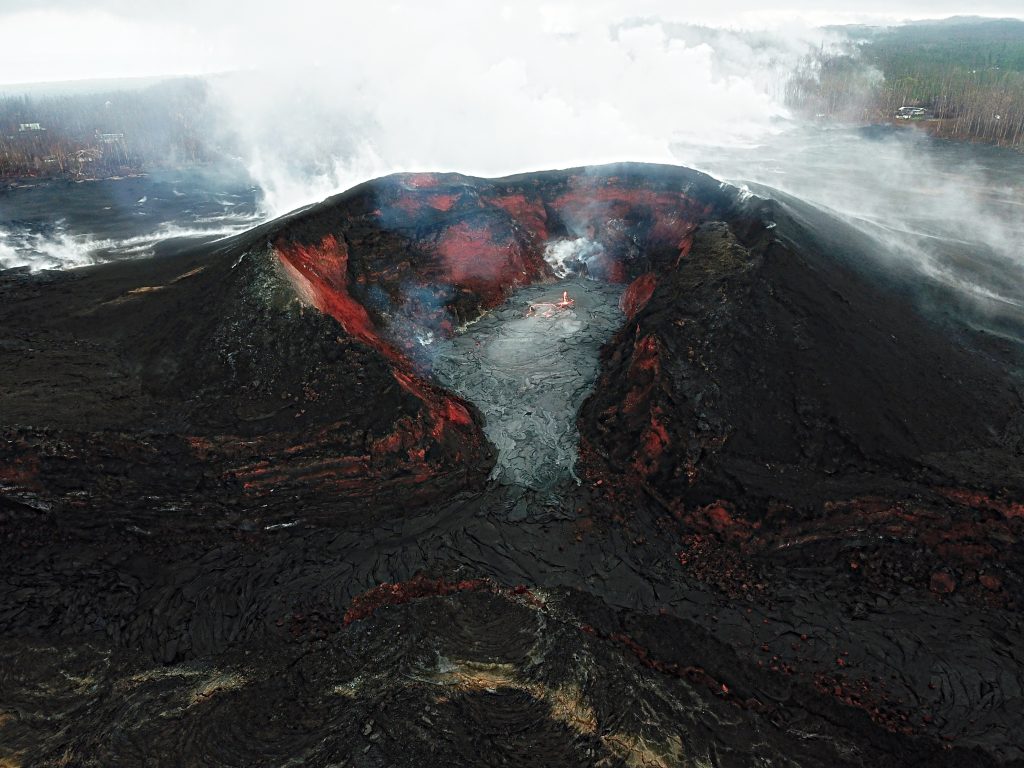
The Unmanned Aircraft Systems team was able to conduct a brief overflight of Fissure 8 between passing rain showers, which resulted in abundant steaming on the flow field. This UAS image shows a small pond of lava on the floor of the crater within the Fissure 8 cone, with some minor, low-level spattering and slow-moving lava just barely entering (but not heading down) the spillway. Nothing unusual was observed anywhere else on the Lower East Rift Zone on Sept. 4, 2018. Click to enlarge. PC: USGS HVO
Hawai‘i Fire Department Battalion Chief Matthias Kusch explained that there is no ongoing measurement by his department, but it has the instruments to investigate any complaints made about volcanic gases.
“SO2 is our primary concern,” he said. “That is what we’ve been directed to. I know there are a lot of trace gases out there. If anybody has a valid concern on gas levels, they can call 911 and have that area investigated.”
“The health effects of long-term exposure to SO2 have not been thoroughly evaluated in Hawai‘i, or anywhere else… we are not aware of any gases posing health risks from the volcano at this time,” said Anna Koeth at the Hawai‘i Department of Health.”
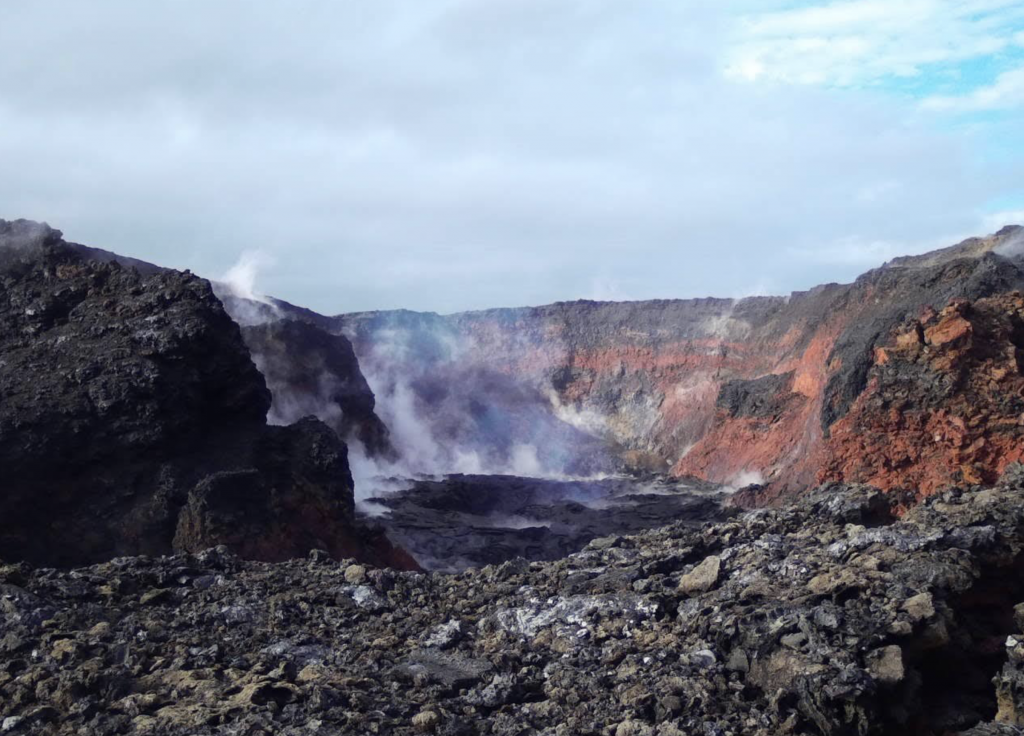
View into Fissure 8 cone after lava drained away. USGS webcam image from Nov. 4, 2018. Click to enlarge. PC: USGS
In addition to the fumes, fine threads of volcanic glass called “Pele’s Hair” remain in the trees, gutters and lawns of some residents who have not had the resources to return home and deal with the damage.
Linda Carroll is a Leilani homeowner who chooses to rent elsewhere because of the financial burden she would face making her home habitable again. She said Pele’s Hair is still a problem at her former home.
“I made the mistake of wearing my flip flops outside,” she said, “but once you get a few pieces in your toe, it’s hard to get them out.”
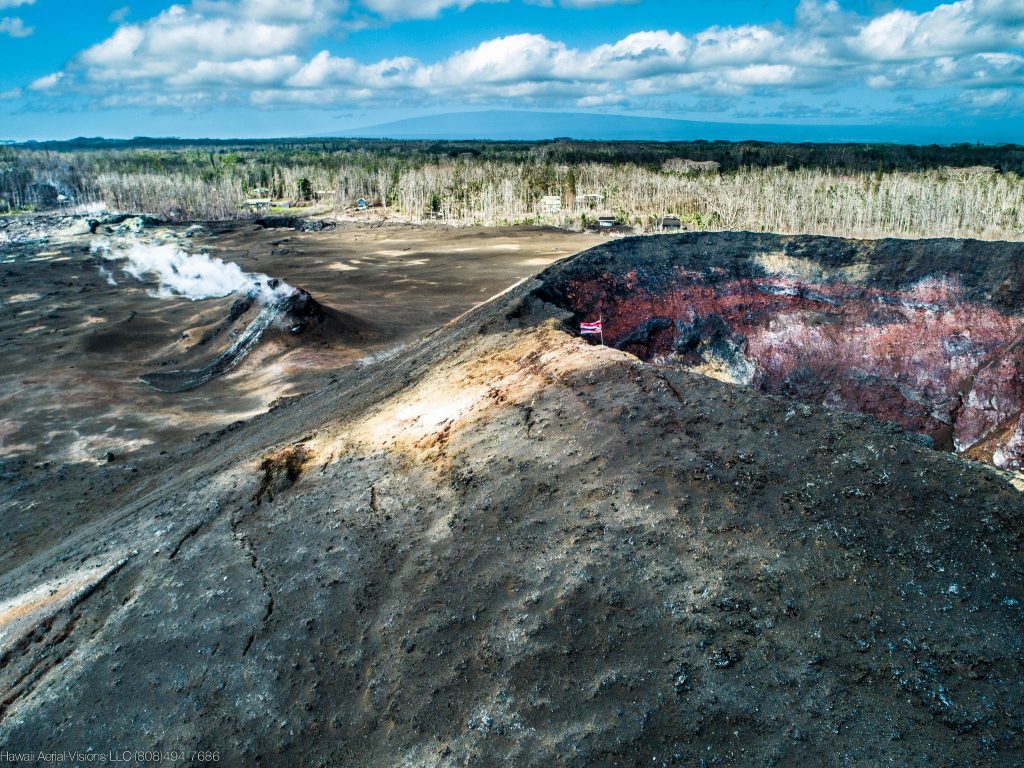
A upside down flag has been placed on Fissure 8, December 2018. PC: hawaiiaerialvisions.com
Medical professionals told several residents to avoid exposure, but it seems like an inescapable reality for them.
In addition to concerns over lasting physical effects, many residents feel they will never recover emotionally from the ordeal.
“The PTSD is gonna be the lasting impact for many residents,” said Leilani resident Dane DuPont. Physical wounds heal; mental scars are there for the long haul, and those are going to be widely distributed.”
Anyone who would like their health complaints investigated can contact the Hazard Evaluation and Emergency Response Office at (808) 586-4249. Those needing mental health resources can call the state Department of Health’s Crisis Line of Hawai’i at (800) 753-6879.
Particulate matter measurements are available online.














